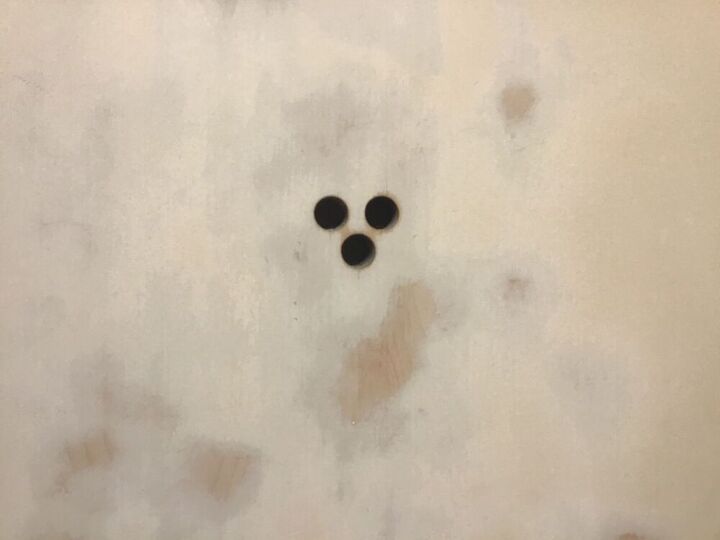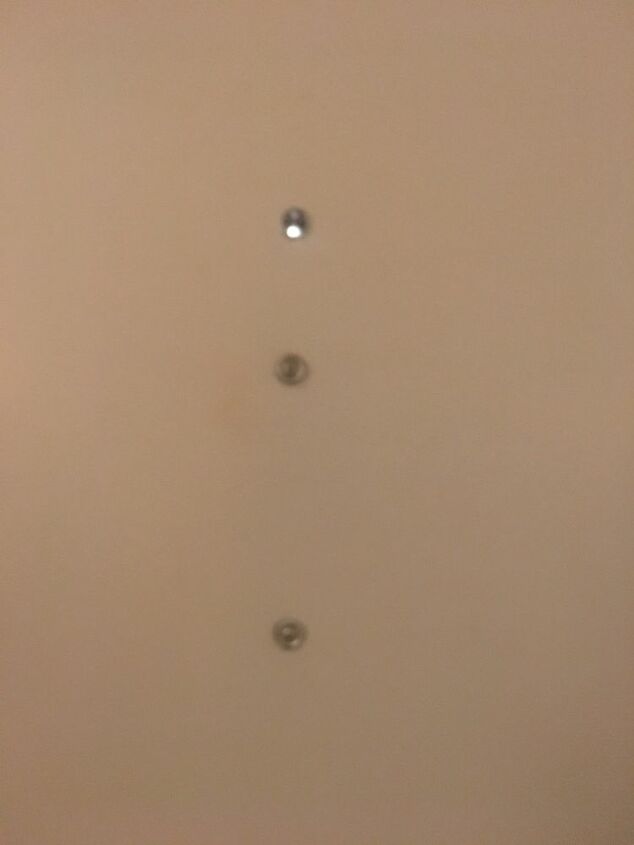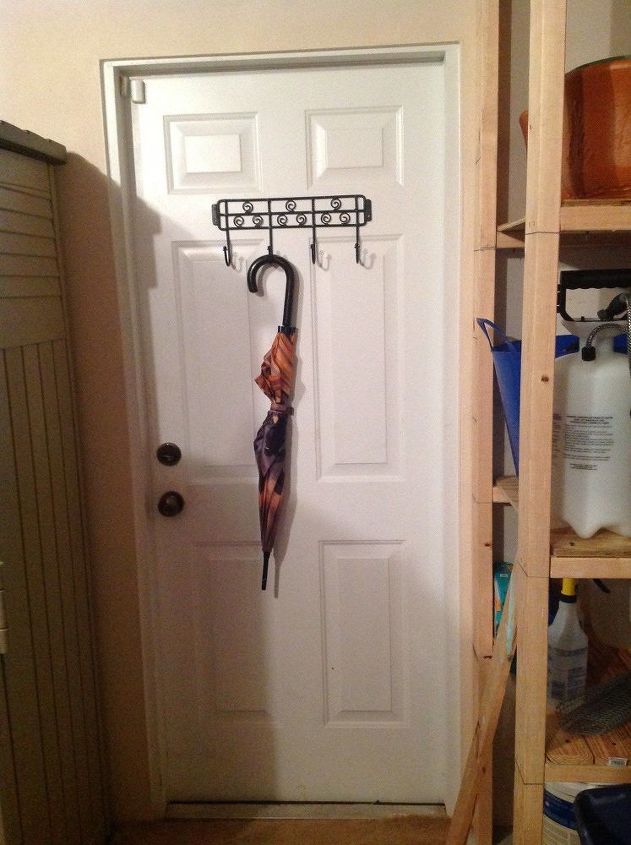How can I fill in bore holes to a wooden front entry door?

My front entry door was installed in 1978 and it is made of wood. I recently removed the unsightly ineffective ‘doorbell’ that had been on it, only to find there were 3 bore-holes that went straight through the door. I have something to put over the holes to cosmetically but I would like to fill these in somehow to give it some measure of insulation (we live in CT). Any suggestions
Related Discussions
How to get rid of mice?
We seem to have some unwelcome Mickeys and Minnies in our house. What is the best way to get rid of them?
How to remove popcorn ceiling with asbestos?
I want to remove my popcorn ceiling, but it has asbestos in it. How do I go about this safely?
How to caulk baseboard gaps?
How do I fill gaps at baseboard, should I caulk? If so, does anyone know how to caulk baseboards?
How to fix squeaky hardwood floors?
How do I fix squeaky hardwood floors?
How can I cover these 3 ugly holes inside my front door?
live in condo, the bottom 2 are screws holding mandatory door knocker. The other a peep hole. Thinking similar to bottom pic with a working hinged door, opening so ca... See more
How can I put a wooden bar across my garage entry door for security?
I have an attached garage and for security want to put a wooden bar across my garage entry door but the door is not flush with the jamb. Goes in about an inch. Plus ... See more







If you fill it with caulk, that would add a bit of insulation. Put it on evenly, then paint your door after.
Hi Lucy, hope this helps you fill the bore holes in your front entry door. How do you fill an old doorbell hole?
Cover any stripped parts of the wire with electrical tape. Tuck the wires into the hole in the wall. If the new wireless button cover does not completely cover the area where the old housing was, you'll need to fill the hole with wood putty, allow it to dry, and then sand and paint.
How to Replace a Doorbell - The Home Depotwww.homedepot.com › how-to-replace-a-doorbell
I like using Dunham’s wood filler. You can mix it with water base stain to match your door and it can be painted after a light sanding
Can you get in the holes with spray foam insulation? That would help insulate. As far as how to cover it - could you share a photo of the whole door? I’m having trouble visualizing where these holes are.
Hi Lucy! I've used this product and it's excellent!
https://www.amazon.com/dp/B01N9UXVSN/ref=cm_sw_r_cp_apa_i_zWJgFb8P6Q4X9
it is was mine I would use a hole saw to cut a plug the same size an fill the hole. Once fitted you can sand the surface and paint or stain.
There are a couple possible suggestions. You could find a wooden dowel the same size diameter as these holes cut the dowel to fit and fill the hole and glue (plug) in place
You could try placing a piece of a pool noodle inside for insulation/ filler and use Bondo or epoxy putty to seal up the hole in a waterproof manner. Both the Bondo and epoxy putty can be sanded smooth primed and painted. Hope you find the perfect solution for your problem.
thank you so much EVERYONE!!!!!!!!!!! I’m pretty good at patching surfaces, but I just couldn’t figure out how to fill in the negative space (the holes!) that run through the door front to back, that would give it some insulation.
You can fill with wood putty, then sand smooth and paint. I would get the pre-mixed putty as it is thicker and would be better for larger areas. Tape a piece of cardboard or luan onto one side to help prevent it running down as you putty from the other side.
I would buy some wooden dowels in the correct diameter, and cut to fit the depth of the door, add some carpenters glue to the surface and tap them in. Then if needed sand the dowel smooth to the door, prime and paint.
I would use multiple layers of Bondo. That will fill the holes and it is sandable and paintable. It would also help insulate.
or
Get Great Stuff, insulating foam in spray can. Let dry thoroughly then scrape it even with the door, then paint.
Stick a wood dowel and measure the length to the outside and mark. Spray foam insulation from Home Depot it has a fixable nozzle and it expands...so take your time and go all the way around the holes. Stick the cut dowels on the holes while the foam is wet. When it sets it should be firm, sand the dowel stubs smooth and paint.
Measure the diameter and get a wooden dowel and cut off the section to fill the hole. Then glue-carpenter's wood glue, when dry, sand and paint.